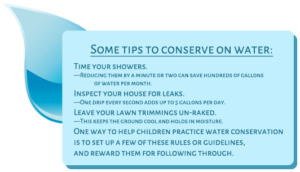The recent dry spell that Guam has been experiencing may have consequences on the island’s primary source of water: Guam’s aquifers – underground water sources located in northern parts of the island.
As rainfall decreases, the aquifer won’t necessarily run dry, but more saltwater will be finding its way in. This will cause Guam’s tap water to turn saltier and require heavier purification techniques, such as reverse osmosis.
Dry conditions have already been worsening in the past couple months. Grass fire activity has increased as a result and it is easy to see that what was Guam’s beautiful patches of greenery is now looking brown.
GWA has not released any notice for the public and its customers to conserve on water use. However, if the drought persists and their efforts to prevent or prepare against it falter, conservation warnings will most likely be issued.
In the 1960s, Guam experienced a five-year long drought, displaying evidence that it is possible for this to happen again.
The National Weather Service released a statement, in which they said, “One of the strongest El Nino events in recorded history remains entrenched across the equatorial Pacific Ocean.” The El Nino advisory that was issued by the Climate Prediction Center (CPC) is still in effect.
The drought caused by this El Nino is what has been affecting us and will continue into the late spring and early summer. According to the National Weather Service, as of April, only 1.21 inches of rain has fallen at the airport and that is about 40 percent of normal.
“Water supplies should be monitored and some water conservation is encouraged.Drying and yellowing of crops and vegetation will become worse and the amount of grass fires will increase in the coming weeks,” announced the National Weather Service.
Chief Engineer of the Guam Waterworks Authority, Thomas F. Cruz, did not wave caution to residents of Guam, but did shed some light on their efforts to manage with the drought against them. “We are aware of the threat of a drought and are exerting efforts to make it so that the drought is not a problem,” Cruz said, “Though water conservation would be wise, it is not necessary at the moment.”
GWA has been working on efforts in leak prevention and sustaining good water production levels to counter the threat of a drought. “We have been receiving a little more rain in the past couple days, so it’s looking a little brighter in terms of Guam overcoming this problem,” said Cruz.
In the wake of a threat that could affect Guam in such a negative way, the choice to assist in efforts against the drought is up to residents. Water conservation could have a significant impact on how Guam’s water sources react to the coming months.


